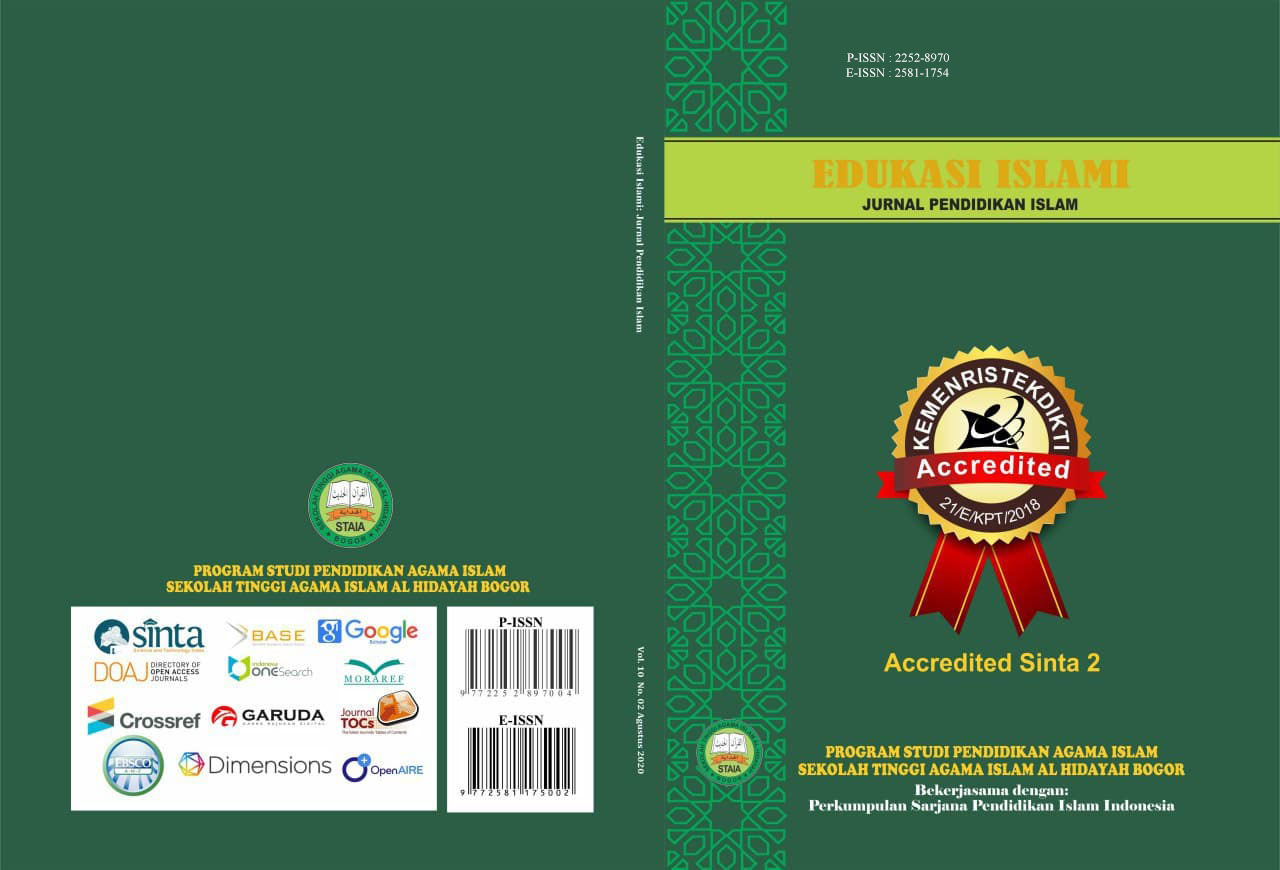The Implementation of Student Character Model at Public High Schools In Tanjungbalai City
DOI:
https://doi.org/10.30868/ei.v12i001.7318Keywords:
Character Development, Pancasila Student, LearningAbstract
This research examines the implementation of the student character development model based on the Pancasila Student Profile Project (P5) in State Senior High Schools in Tanjungbalai. The study finds that the character development model utilizes Problem-Based Learning, Project-Based Learning, and Discovery Learning approaches, highlighting the importance of developing the Operational Curriculum for Educational Units to maximize students' potential. The implementation is integrated across subjects, significant event programs, and P5 projects, aiming to instill values such as religious devotion, global diversity, cooperation, independence, critical thinking, and creativity. This research employs a qualitative field research method to explore the implementation of the student character development model based on the Pancasila Student Profile Project (P5) in State Senior High Schools in Tanjungbalai. However, several challenges impede effective implementation, including a lack of understanding and support for P5, limited resources, diverse interpretations of Pancasila, difficulties in content delivery, and inadequate monitoring and evaluation processes. These challenges underscore the necessity for enhanced understanding, resource allocation, and comprehensive evaluation to optimize the P5 implementation and ensure the successful character development of students. The findings emphasize the need for strong collaboration among government, schools, teachers, students, and the community to overcome these challenges and achieve the intended educational goals.
References
Creswell, J. W. (2007). Qualitative Inquiry And Research Design: Choosing Among Five Approaches. Sage Publications.
Fathurrohman, P. (2013). Pengembangan Pendidikan Karakter. PT. Refika Aditama.
Furqon, M., & Hidayatullah. (2010). Pendidikan Karakter : Membangun Peradaban Bangsa. Yuma Pustaka.
Haerudin, D. A., Rahmat, C., Nurdin, E. S., & Somad, A. (2023). Development of Student Performance Character Education Models. Jurnal Kependidikan: Jurnal Hasil Penelitian Dan Kajian Kepustakaan Di Bidang Pendidikan, Pengajaran Dan Pembelajaran, 9(1), 305. https://doi.org/10.33394/jk.v9i1.7084
Huberman, M., & J, S. (2014). Qualitative Data Analysis A Methods Sourcebook (Edition 3). Sage Publications.
Khilmiyah, A., & Wiyono, G. (2021). Emotional and social intelligence assessment model for student character reinforcement. International Journal of Educational Management, 35(4), 789–802. https://doi.org/10.1108/IJEM-02-2020-0046
Lickona, T. (1991). Educating for Character: How Our School Can Teach Respect and Responsibility. Bantam Books.
Muawwanah, S., & Darmiyanti, A. (2022). Internalisasi Pendidikan Karakter Islam di Madrasah Ibtidaiyah. EDUKATIF : JURNAL ILMU PENDIDIKAN, 4(1), 909–916. https://doi.org/10.31004/edukatif.v4i1.2007
Munawwaroh, A. (2019). Keteladanan Sebagai Metode Pendidikan Karakter. Jurnal Penelitian Pendidikan Islam, 7(2), 141. https://doi.org/10.36667/jppi.v7i2.363
Parwati, N. N., Tegeh, I. M., & Mariawan, I. M. (2018). Integrating the Values of Local Wisdom into the Learning Model: Building Positive Student Character. In Educational Technology to Improve Quality and Access on a Global Scale (pp. 297–307). Springer International Publishing. https://doi.org/10.1007/978-3-319-66227-5_23
Pattaro. (2016). Character Education: Themes and Researches. An Academic Literature Review. Italian Journal of Sociology of Education, 8(1). https://doi.org/http://dx.doi.org/10.14658/pupj-ijse-2016-1-2
Sahid, U., Wasliman, I., Muchtar, H. S., & Insan, H. S. (2021). Management of Student Characteristics Through Extracurricular Activities in The School Environment Based on Islamic Boarding Schools. Munaddhomah: Jurnal Manajemen Pendidikan Islam, 2(2), 116–125. https://doi.org/10.31538/munaddhomah.v2i2.97
Sholihah, A. M., & Maulida, W. Z. (2020). Pendidikan Islam sebagai Fondasi Pendidikan Karakter. QALAMUNA: Jurnal Pendidikan, Sosial, Dan Agama, 12(01), 49–58. https://doi.org/10.37680/qalamuna.v12i01.214
Sudrajat, A. (2011). MENGAPA PENDIDIKAN KARAKTER? Jurnal Pendidikan Karakter, 1(1). https://doi.org/https://doi.org/10.21831/jpk.v1i1.1316
Supramono, & Larasati, S. P. (2014). Total Quality School Characteristics: Studies in Private and State Elementary Schools. Researchers World, 5(7).
Suwito, U. (2008). Tinjauan Berbagai Aspek: Character Building. Tiara Wacana.
Wardani, F., Suparmi, & Aminah, N. S. (2019). Evaluating the E-Learning on Students’ Character: Blended Learning Model as a Strategy to Improve Students’ Character. Journal of Physics: Conference Series, 1155, 012029. https://doi.org/10.1088/1742-6596/1155/1/012029
Yulianti, T., & Sulistiyawati, A. (2020). The Blended Learning for Student’s Character Building. Proceedings of the International Conference on Progressive Education (ICOPE 2019). https://doi.org/10.2991/assehr.k.200323.089
Zahri Harun, C. (2015). MANAJEMEN PENDIDIKAN KARAKTER. Jurnal Pendidikan Karakter, 4(3). https://doi.org/10.21831/jpk.v0i3.2752
Downloads
Published
Issue
Section
Citation Check
License
Copyright (c) 2023 Ahmad Muammar Khairi, Rusydi Ananda, Ahmad Syukri Sitorus

This work is licensed under a Creative Commons Attribution 4.0 International License.
Authors who publish with this journal agree to the following terms:
- Authors retain copyright and grant the journal right of first publication with the work simultaneously licensed under a Creative Commons Attribution License that allows others to share the work with an acknowledgment of the work's authorship and initial publication in this journal.
- Authors are able to enter into separate, additional contractual arrangements for the non-exclusive distribution of the journal's published version of the work (e.g., post it to an institutional repository or publish it in a book), with an acknowledgment of its initial publication in this journal.
- Authors are permitted and encouraged to post their work online (e.g., in institutional repositories or on their website) prior to and during the submission process, as it can lead to productive exchanges, as well as earlier and greater citation of published work (See The Effect of Open Access).









